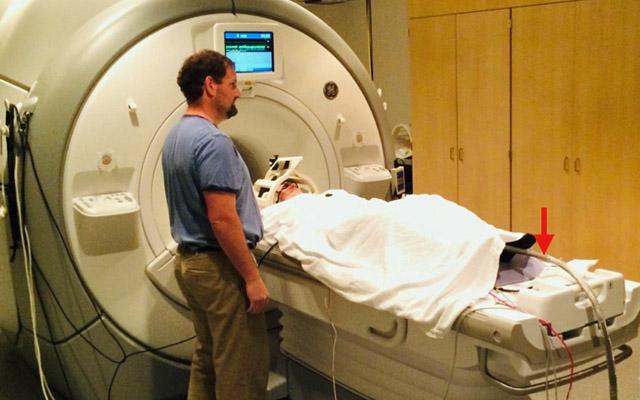VA Studying Laughing Gas as Treatment for Veterans With PTSD
/By Pat Anson, PNN Editor
The U.S. Department of Veterans Affairs is sponsoring a small study to see if nitrous oxide – commonly known as laughing gas – could be used as a treatment for veterans suffering from post-traumatic stress disorder (PTSD), pain and depression.
The placebo-controlled Phase 2 study will be held at the VA Palo Alto Health Care System in California this fall. Investigators plan to recruit 104 veterans with PTSD to participate. Half would inhale a gaseous mix of nitrous oxide and oxygen, while the other half would be given a placebo.
Although PTSD is the primary focus of the study, researchers also hope to learn if nitrous oxide could be used to treat pain and other symptoms.
“Specifically, the investigators will first assess whether nitrous oxide treatment improves PTSD symptoms within 1 week. In parallel, the investigators will explore whether the treatment improves co-existing depression and pain,” researchers said. “In addition, the investigators will explore nitrous oxide's effects on a PTSD-associated impairment that is often overlooked - disruption in cognitive control, a core neurobiological process critical for regulating thoughts and for successful daily functioning.”
Military veterans suffering from PTSD often experience pain, anxiety, anger and depression. About one in five veterans who served in the Iraq or Afghanistan wars developed PTSD within a year of coming home.
In a small pilot study funded by the VA, three veterans with PTSD inhaled a single one-hour dose of nitrous oxide through a face mask. Within hours, two of the patients reported a marked improvement in their symptoms. The improvement lasted one week for one patient, while the second patient's symptoms gradually returned over the week. The third patient reported an improvement two hours after his treatment, but his symptoms returned the next day.
"While small in scale, this study shows the early promise of using nitrous oxide to quickly relieve symptoms of PTSD," said anesthesiologist Peter Nagele, MD, chair of the Department of Anesthesia & Critical Care at University of Chicago Medicine and co-author of a study recently published in the Journal of Clinical Psychiatry.
Nitrous oxide is a colorless and odorless gas that is commonly used by dentists to manage pain and anxiety in patients. It was once widely used in American hospitals to relieve labor pain, but fell out of favor as more Caesarean sections were performed and women opted for epidural injections and spinal blocks.
Some hospitals are now reintroducing nitrous oxide as a safer and less invasive option. The gas makes patients less aware of their pain, but does not completely eliminate it. Recent studies have shown that about 70% of women who receive nitrous oxide during labor wind up using another analgesic due to inadequate pain relief.
"Like many other treatments, nitrous oxide appears to be effective for some patients but not for others," explained Nagele. "Often drugs work only on a subset of patients, while others do not respond. It's our role to determine who may benefit from this treatment, and who won't."
If findings from the VA’s pilot study are replicated in further research, it may be feasible to use nitrous oxide for rapid relief from PTSD, while longer-term treatments like psychotherapy and pharmaceutical drugs are also implemented.















